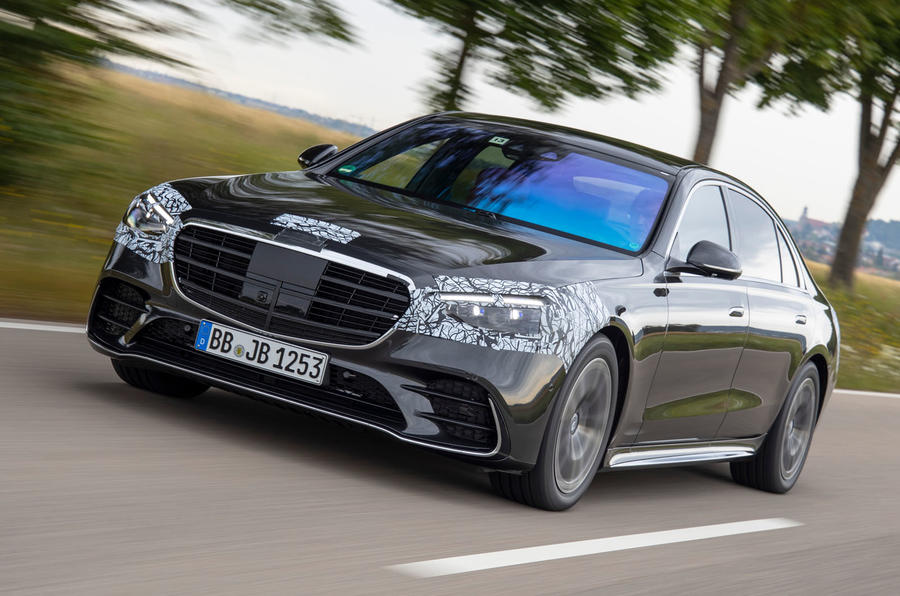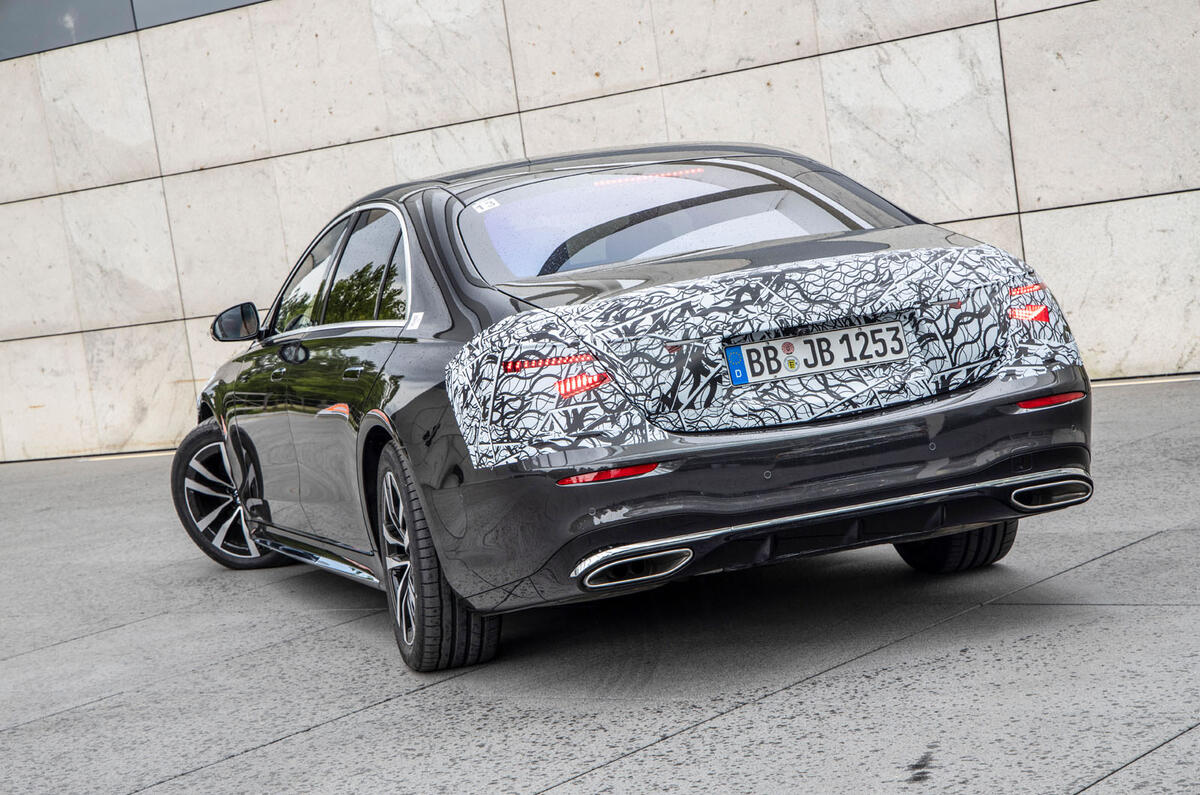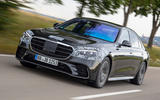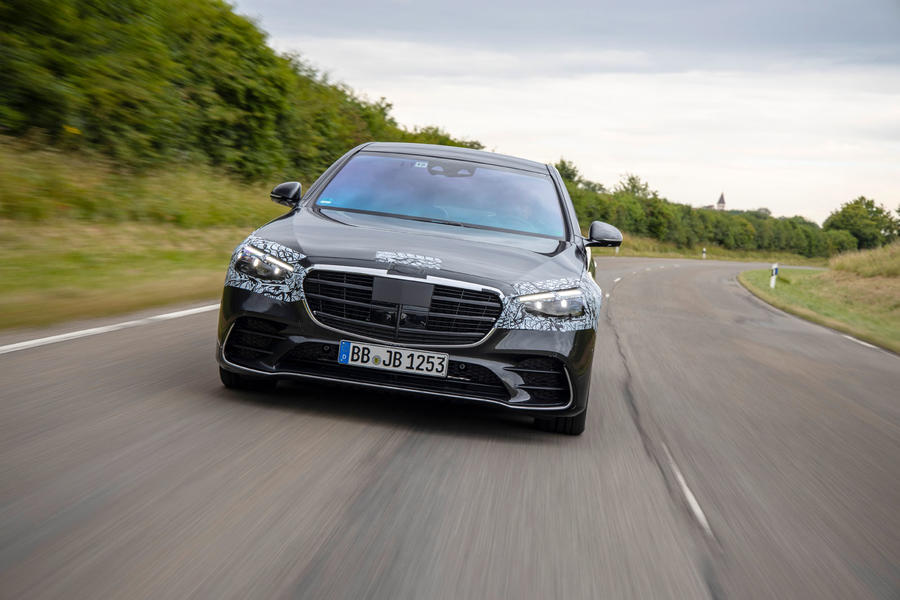Mercedes-Benz says it will revolutionise luxury car dynamics with its seventh-generation S-Class, which will offer two different rear-wheel steering set-ups within a host of new chassis functions intended to make it the most agile, driver-focused luxury limousine.
Planned to be unveiled in early September, prior to UK deliveries starting in early 2021, the new S-Class will be the first non-AMG Mercedes to offer four-wheel steering – a function already available on its Audi A8 and BMW 7 Series competitors. Of the trio, the BMW has always been notably the most driver-focused.
While rival systems offer only a few degrees of rear-wheel steering angle, one of the set-ups developed for the new S-Class achieves up to 10deg – a figure usually seen only on large commercial vehicles. The move provides the new standard-wheelbase S-Class with a considerable 2.0-metre reduction in turning circle from the current model’s 10.2 metres, according to S-Class chief engineer Jürgen Weissinger. This compares with a 11.4-metre turning circle for the A8 when it’s fitted with its Dynamic All-Wheel Steering.
Weissinger says the new system brings added agility in urban conditions as well as vital improvements in handling and stability at higher speeds. Autocar took a brief ride in the rear of a near-production prototype, and this confirmed the first claim, as the S-Class tackled tight spaces with all the ease and manoeuvrability of a much smaller car.
The impression is of a much wieldier car than the current S-Class, having the ability to turn in to parking spaces and gaps in traffic without the need for any steering correction. “It’s a whole new world,” said Weissinger. “The turning circle is better than that of the Mercedes-Benz A-Class. It really is a game-changer.”

To steer its rear wheels, the S-Class uses electroactuated arms incorporated within a newly developed five-link rear suspension. As is usual with these systems, it steers in the opposite direction to the front wheels at low speeds and the same way (at up to about 1.7deg) at higher speeds. A second set-up, reserved for S-Class models with rear wheels a different size to the fronts, can achieve a more conventional angle of 5deg. Also new is a the latest development of Mercedes’ 4Matic four-wheel drive system, which features fully variable apportioning of drive, and a new active suspension system, E-ABC, which includes a curve function to counteract body roll through turns and better control pitch and dive under acceleration and braking.



















Join the debate
Add your comment
Sometimes when I quote,
No bad thing.
I kind of agree, but,it does seem to keep trollers away.
Peter Cavellini wrote:
Sure but I still can't figure out how the algorithm determines what's spam and what's not, especially when I never attach any links.
Nice to have if you are a CEO or a Dictator.......
Nice that Mercedes can throw so much money at a segment that's rapidly disapearing. Surely this could be the last S-class?
Rear guard action
The article spent a lot of time talking about a Japanese Rear Wheel Steer technology that's 30 plus years old, what's this then?I see, it wasn't a technology worth anything until the Germans decide to deploy it then it's the best thing since sliced bread, the older I get the more I see a "automobile mafia at work" in the car industry to the detriment of progress a lot of the time.
405line wrote:
Think you mean 40 years old - the Japanese were using it in the 80s.
typos1 wrote: